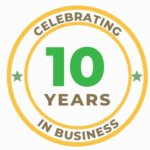Future-Proofing Your Workforce: Essential Strategies for HR Success

Today’s workplace is unlike anything employers have experienced in the past. With unprecedented fluidity in job changes and rapidly evolving technology, a hyper-focused, future-proof plan is essential for any employer.
Future proofing your workforce is one of the most effective strategies to attract and retain talent. Investing in your employees should be at the top of your list when it comes to long-term assets.
Skills-Based Talent Approach
A skills-based talent approach involves understanding the skills currently within your organization, identifying the skills needed for employees to progress, and determining which skills are required to improve your business through hiring.
By identifying your employees’ existing skills, you can:
- Pinpoint areas for improvement
- Position employees correctly
- Identify gaps in your current workforce
- Help employees understand your strategy and their role in it
Understanding Employee Needs
Understanding employee needs is one of the most underrated yet easy-to-implement solutions for strengthening your workforce. One effective method is through “stay conversations”—one-on-one meetings with employees to understand what they need to stay in your organization.
Some top reasons employees stay at their workplace include:
- Compensation: Most people feel underpaid. If you cannot meet their salary expectations, help them understand your expectations, their future career prospects, and opportunities within your organization.
- Personalized Creative Development: Provide personalized development opportunities tailored to their skill sets and needs. Creative development is a long-term strategy, not just a quick fix from a seminar.
Work-Life Balance: While compensation is crucial, work-life balance is a close second. Employees want clarity on what is expected during work hours and if they need to participate in excessive communication or meetings outside regular business hours.
Succession Planning
Every business will experience turnover. When changes arise, you need a rock-solid plan to keep your organization moving forward and fill needed positions as quickly as possible.
Consider these key points for a successful succession plan:
- Have a Backup: Cross-training allows an employee to temporarily fill in when needed.
- Look Within: If you’ve developed your employees’ skills, there’s a high chance you can promote from within.
- Look Outside: When hiring externally, use a skills-based talent approach to find the best fit for your organization based on skills, not just job roles.
Mahatma Gandhi understood the importance of future-proofing when he said, “The future depends on what you do today.”
By implementing these strategies, you can build a resilient and adaptable workforce, ensuring your organization thrives in the face of future challenges. Prioritizing skills development, understanding employee needs, and having a robust succession plan will position your business for sustained success.

